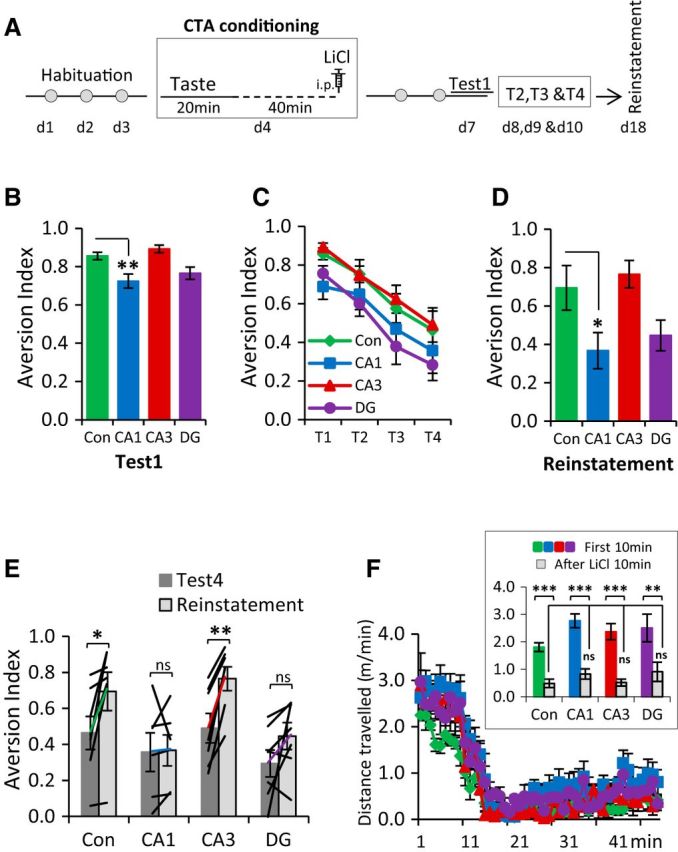Figure 3.

NMDA receptor-dependent function in CA1 is required for associative taste learning and memory formation. A, Outline of the procedure used to conduct the CTA experiment. B, CA1-NR1 KOs showed an attenuation of CTA memory. DG-NR1 KOs showed a small reduction in CTA memory; however, it was not statistically different from control mice. CA3-NR1 KOs were not different from control mice. C, CA1-, CA3-, and DG-NR1 KOs exhibited normal CTA extinction. D, Reinstatement showed a main effect and CA1-NR1 KOs were statistically different from control mice. E, Moreover, the paired analysis of reinstatement to that of the last extinction revealed that control mice and CA3-NR1 KOs showed clear reinstatement effect, whereas CA1-NR1 KOs and DG-NR1 KOs did not show reinstatement. F, Following intraperitoneal injection of LiCl, all groups of mice showed less mobility, indicating that LiCl-elicited gut pain was processed similarly in all the NR1 KOs. Con, CA1, CA3, and DG represent control, CA1-NR1 KOs, CA3-NR1 KOs, and dentate gyrus-NR1 KOs, respectively. ns, Not significant. *p < 0.05, **p < 0.01, ***p < 0.001.
